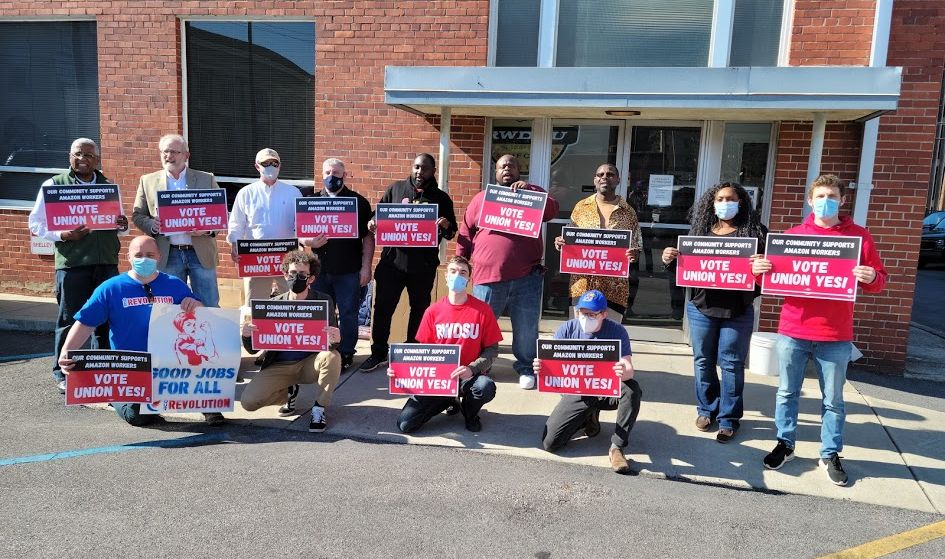Anthony Main is a member of Socialist Action Australia.
from The Socialist, ISA in Australia
The federal government announced a $130 billion wage subsidy package in late March. The measures include provisions for workers in companies that have been hit by the COVID-19 pandemic to be paid up to $1,500 per fortnight.
If companies are eligible, the wage subsidies equate to approximately 70% of the median wage. The government expects that at least six million workers will be paid. While this is much better than nothing, and will be welcomed by many of those thrown out of work, the scheme has a raft of problems that need to be understood.
Scott Morrison has presented the package as a generous way to protect jobs, but workers need to ask: will the subsidies be enough; will they work; who benefits the most; who’s paying; and what could the alternative be?
Are they enough?
While these subsidies will offer a large part of the workforce some important relief, at $1,500 per fortnight they will represent a significant pay cut for many workers. For example, that amount of money would not be enough for a single parent with children to live on. This is why in addition to wage support we also need to demand things like rent and mortgage relief.
Additionally, many millions of workers won’t be eligible. For example, casual workers who have been employed for less than a year will miss out. People on most working visas and those not “on the books” also won’t be eligible. These groups of workers, and those with legitimately higher expenses, cannot be left behind.
Will they work?
The wage subsidies were announced very quickly after several other rounds of stimulus. This is an admission that what the government had announced didn’t solve the problems. Shoring up the cash flow of businesses did not stop the mass cull of jobs, nor did offering bosses cheap loans and tax breaks.
Similarly, injecting ‘liquidity’, cheap loans, into the banks did not encourage people to borrow, and the small cash payments to welfare recipients have not yet encouraged people to spend. While the wage subsidies will save some jobs, they will most likely not be enough to stave off a very deep recession in Australia.
A number of commentators have also raised concerns about the lack of integrity in the scheme. For example, the payments are supposed to be linked to the worker keeping their job. But while job seekers on welfare payments are normally expected to meet very strict obligations, it seems very few checks will apply to employers getting wage subsidy payments.
Already there are reports that some companies are planning to take advantage of the scheme by using it to cut workers pay back to $1500 a fortnight, whether they had plans to stand them down or not. In every company that receives the subsidy the workers themselves should be able to check the legitimacy of the payments to make sure that the scheme is not being exploited by unscrupulous bosses.
Who benefits the most?
While Morrison paints the wage subsidies as job saving measures, it’s clear that the main beneficiaries are really employers and profits. This can be seen in the response of all the major employer organisations. They lobbied for it and they have now hailed it as a big win. Capitalist investors were also so boosted by the announcement that it led to the biggest one-day rise in the share market for 40 years.
The bosses have been open about the fact that this package will help them shore up profits, but the set-up also benefits the government to some extent. Instead of stood-down workers being transferred to the ranks of the unemployed, an injection of state funds into private payrolls helps to keep the official unemployment figures down.
Who’s paying?
While official details about exactly where the funding is coming from are not yet clear, there are things that we do know about capitalism that explain who will pay. For example, we know that under capitalism, workers do not get the full amount of the wealth they produce. Part of the wealth goes to our wages, while another portion is hived off by the boss as profits.
But even when we look at the wages share of the wealth, it’s divided up in different ways. Parts of our wages get taken by other profiteers, like landlords and bankers, while another part is taken by the state in the form of taxes. In Australia the majority of the government’s revenue comes from taxes levied on working people. In other words, it’s derived from the wealth workers create. It’s our money!
In addition to this, it’s likely that once the government declares that the immediate crisis has passed, they will point to this spending as an excuse to make other cuts to public spending.
Who should pay?
Socialists demand that we look at the profits side of the equation. For decades in Australia companies have been making record profits. Wages have been stagnant and social services – paid for with the wealth we produce – have been cut. This is just one reason why the healthcare sector has been inadequate in the face of a pandemic.
With profits piling up for years, why should already struggling workers be forced to pay when hard times hit? The capitalist class should be forced to cover the costs. We know that they have huge amounts of wealth hoarded, and that many have avoided paying any tax at all for years. Now is the time for them to hand back the profits they made from our work.
Special taxes could be levied on the biggest of businesses and billionaires who we know have hoarded cash to begin to pay for some basic crisis measures. The necessary wealth clearly exists.
But even at a workplace level, we should demand that employers cover all the costs associated with the pandemic. Workers should be kept on the books and paid their regular wage until it’s safe to return to work. We know from the public records of many big businesses that they can afford this if they dig into their savings and cut their profits.
Businesses that refuse could be taken into public ownership, run by the staff and managed democratically.
What about small business?
It is true that many small business make modest profits and may not be in a position to cover wages for several months. In these cases, we should ask that they open their books. If they want a taxpayer (i.e. worker) funded subsidy, they should first show the workers where the profits from the previous years have gone.
If the profits lie in extravagances, then the employer should be forced to rearrange their affairs to free up the cash to keep workers paid. If there is a genuine lack of money then the workers should make the decision whether to tick off on a taxpayer subsidy, albeit one with strict rules and checks to ensure jobs and conditions are maintained.
Approach of union leaders
Unfortunately, this is in stark contrast to the way the leaders of the Australian Council of Trade Unions (ACTU) have approached things. Not only have they had no regard for the class issues at play, but they make matters worse by promoting the government’s profit-saving policies as wins for the union movement. A real win would be a package that used profits rather than workers’ taxes to pay for the subsidies.
The COVID-19 crisis has put all political forces under pressure and it’s not just Scott Morrison who has thrown his principles out the window. The ACTU has for years told us (correctly) that we need to ‘change the rules’, but now, at a time when we really need social change, they have ditched everything they once said.
Instead of outlining a plan to stop the employers from using this crisis to shift even more wealth to their side, they have run to the bosses and offered to help make sure profits are protected. Already several unions have worked with employers to strip back the minimum legal Award conditions and others have helped facilitate redundancies without a fight.
In a number of interviews, ACTU leader Sally McManus has said that she wants to “put aside differences and hostilities”, and that “we have a common interest” with the government and employers. Scott Morrison congratulated her in a press conference adding “there are no bosses or workers anymore, just Australians”. This had echos of a militarist speech given by the German Kaiser on the eve of World War One.
Common interests?
The idea of a ‘common interest’ is something that is pushed by bosses to dupe workers into not struggling for what is rightfully ours. Where was the common interest when workers were begging for decent pay rises, job security, affordable housing, or even for our own money to be used to fund an adequate health service?
Where was the common interest when Qantas was given a $715 million taxpayer (i.e. worker) handout only to respond a few days later by standing down 20,000 workers? There was no common interest then and there is no common interest now. Common interests mean bosses interests.
The bosses have a clear class-based view of society, they have combative leaders, and they are working to advance their position. Workers too need to understand where the class lines are drawn. We need to make sure that we do not lose any ground during this crisis, and for that we also need bold and combative leaders.
It’s clear that the leaders of the ACTU are not up to the task. We have a big challenge ahead to develop new fighting leaders and to reinvigorate our movement. That process starts with the development of a political alternative – an alternative that accepts the reality of the class society we live in, and has a plan to win a bigger share of the wealth we create.
A sensible system
While we need to develop a political alternative in the union movement, we also need a new type of politics and organisation in broader society. While we’re exploited at work, we also face issues around things like housing, education and healthcare. We need to fight for a bigger share of the wealth we’ve created that’s been accumulated by the state, as well as by the employers.
Whether capitalism is legitimate or not is a question being raised by the virus crisis. The workers movement needs to have answers. The profit-driven nature of capitalism has always resulted in exploitation and oppression for the majority, this is only being amplified now in the time of a pandemic.
Rather than tail-ending the bosses, the union movement needs to outline its own plan for how society should run. A socialist society that removes the profit motive, and prioritises the needs of the majority, their health, and the environment is what we need. In a time like today, socialism would mean swiftly re-orientating production to manufacture more medical supplies, develop vaccines, build hospitals, expand hygiene measures, and protect jobs.
This sensible model for society is the opposite of capitalist private ownership, production for profit and ‘market rule’. Socialism is based on public ownership of the key parts of the economy, sustainable planning and democratic control.
The wealth exists
The swift drop of $130 billion into wage subsidies shows that huge amounts of wealth already exist. The problem is that the state, like workplaces, is controlled by the capitalists. The Liberals, Labor, Greens, and all the other pro-capitalist parties support the current set-up and operate in a way that benefits big business. This is seen when they are all in furious agreement when it comes to spending our money to bail out the rich.
The current union leaders aren’t going to fight for this alternative on our behalf. We need to take the initiative to win people to these ideas, and to organise ourselves to make sure we are not forced to pay for a crisis we didn’t create.



